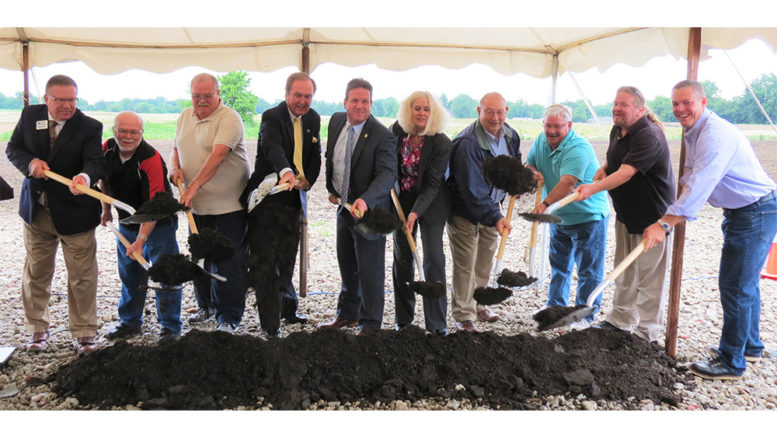Officials representing Hamilton County and the Town of Sheridan broke ground Monday on a project designed to ease massive flooding for residents in that area. Heavy rains caused a 100-year flood in Sheridan back in 2011, affecting dozens of homes and closing numerous roads, a problem that officials described as becoming increasingly insurmountable over the years.

Kinkead
“Sheridan is built in a low part of the county,” says David Kinkead, Sheridan Town Council president. “I don’t know what has changed, but the flooding has continually gotten worse.”
Sheridan reached out to the Hamilton County Surveyor’s Office and Drainage Board for help in solving the problem. A study of the Symons and Krause Watershed, which serves more than 40 percent of the residents in Sheridan, showed an outdated and undersized infrastructure. A plan was developed that included the installation of a 48-inch mainline storm sewer that discharges into a new outlet ditch. On Monday, construction began on a retention pond to catch the overflow on land purchased by Hamilton County.
“The benefit for landowners once fully completed will be a storm system that has five times the capacity of the existing infrastructure, all the while slowing water within the retention basin to safely discharge it downstream,” says Joe Miller, Banning Engineering project manager.

Dora
Even more remarkable is the fact that a large portion of the project is being funded by a 40-year, $2,205,265 loan from the United States Department of Agriculture Rural Development (USDA RD). USDA’s Michael Dora explained the loan is the first of its kind in the nation. The Town of Sheridan plans to pay back the low-interest loan with a newly implemented storm water capacity fee.
“Residents may not be too excited about the project right now because of construction,” says Kinkead. “But I would expect that to change the first time it rains and their basements don’t fill up with water.”
“The plan is an excellent example of how working together, municipalities can complete projects and fund them in innovative ways,” says Miller. “A project of this magnitude typically takes 20 years to complete and this happened in less than five. It’s pretty impressive the amount of people who have sweat equity in this project.”

Hamilton County Surveyor Kenton Ward (left) presented a plaque from the Indiana Association for Floodplain and Storm Water Management to Sheridan Council President David Kinkead (right) honoring Sheridan for the work accomplished with the Symons and Krause Regulated Drain Watershed Project. (Reporter photo by Jeff Jellison)

